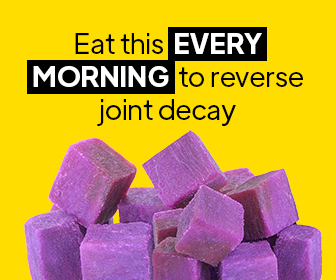If your job or lifestyle requires you to stand for long hours—whether you’re a teacher, nurse, cashier, factory worker, or retail associate—you’ve probably experienced the aches and pains that come with it. While standing may seem harmless compared to sitting for hours, prolonged standing puts significant pressure on your knees, hips, and back. Over time, this can lead to fatigue, poor posture, and even long-term joint and spine issues.
The good news? With the right strategies, you can protect your joints, reduce discomfort, and maintain better overall health. This comprehensive guide will show you why standing all day affects your body and what you can do to stay strong, comfortable, and pain-free.
Why Standing All Day Hurts Your Joints and Back
When you stand for long hours, your body works against gravity in ways that can wear down your joints and muscles. Here’s how it impacts key areas:
- Knees: Standing keeps your knees slightly bent, which places continuous strain on the ligaments and cartilage. Over time, this increases the risk of stiffness, swelling, or arthritis.
- Hips: Your hip joints bear much of your body’s weight. Prolonged standing without movement can cause muscle imbalances and reduce hip flexibility.
- Back: The spine naturally curves, but long hours of standing can compress spinal discs, strain the lower back, and create poor posture habits.
Essentially, your body was built for movement—not for staying in one position too long.
Signs You’re Putting Too Much Stress on Your Joints
If you spend hours standing every day, you might notice:
- Achy knees, hips, or lower back pain after work.
- Swelling or stiffness in the legs and feet.
- Fatigue that doesn’t go away with rest.
- Numbness or tingling in your legs.
- A tendency to slouch or shift weight unevenly.
These warning signs mean your joints and spine need extra care.
Protective Strategies for Your Knees, Hips, and Back
1. Wear Supportive Shoes
Shoes are your first line of defense. Poor footwear can worsen pressure on joints, while supportive shoes absorb shock and promote alignment.
Tips for choosing shoes:
- Look for cushioned soles and arch support.
- Avoid high heels or completely flat shoes.
- Replace worn-out shoes regularly.
- Consider orthotic inserts if you have flat feet or overpronation.
2. Use Anti-Fatigue Mats
If you stand on hard surfaces like tile or concrete, anti-fatigue mats can reduce pressure on your joints. These mats provide cushioning, improve circulation, and reduce overall fatigue.
3. Adjust Your Posture
Standing tall protects your joints more than you realize. Poor posture leads to uneven stress on knees, hips, and the spine.
Posture checklist:
- Keep shoulders relaxed and back.
- Engage your core gently.
- Distribute weight evenly between both feet.
- Avoid locking your knees.
4. Shift Positions Regularly
Standing still is the real problem. Small adjustments can make a big difference.
- Alternate between leaning slightly forward and back.
- Shift your weight from one leg to the other.
- Take short sitting breaks when possible.
- Walk around for a minute every 30–60 minutes.
5. Strengthen Supporting Muscles
Strong muscles take pressure off joints. Incorporating regular strength exercises helps stabilize knees, hips, and the spine.
Effective exercises include:
- Glute bridges (for hip and back support).
- Squats and lunges (for knees and hips).
- Core strengthening (planks, bird dogs).
- Calf raises (to improve circulation).
6. Stretch to Release Tension
Stretching improves circulation, reduces stiffness, and restores mobility.
Key stretches:
- Hamstring stretch: Prevents back strain.
- Hip flexor stretch: Relieves tight hips from prolonged standing.
- Quadriceps stretch: Protects knees from stiffness.
- Cat-cow stretch: Improves spine mobility.
Aim for 5–10 minutes of stretching before and after work.
7. Maintain a Healthy Weight
Excess weight puts more strain on your knees, hips, and lower back. Even small reductions in body weight can significantly lower joint stress and pain.
8. Prioritize Recovery After Long Days
How you care for your body after standing is just as important.
- Elevate your legs to reduce swelling.
- Apply ice or heat packs for sore joints.
- Massage or foam roll to relax tight muscles.
- Take warm baths with Epsom salt to ease muscle tension.
9. Stay Hydrated and Eat Joint-Friendly Foods
Dehydration reduces joint lubrication, making stiffness worse. Pair hydration with an anti-inflammatory diet to protect your joints.
- Drink plenty of water throughout the day.
- Eat foods rich in omega-3 fatty acids (salmon, chia seeds, walnuts).
- Add antioxidants from leafy greens, berries, and green tea.
- Limit processed foods, sugar, and excessive caffeine.
Long-Term Lifestyle Habits for Joint and Spine Health
- Regular exercise: Mix cardio, strength training, and flexibility work.
- Quality sleep: 7–9 hours of rest supports joint recovery.
- Mind-body practices: Yoga, Pilates, and tai chi improve posture and joint mobility.
- Medical check-ups: Early detection of joint problems prevents worsening conditions.
My Personal Observation
I once worked with a nurse who spent 12-hour shifts on her feet. She had severe back and knee pain that no pain reliever could fix. When she switched to cushioned shoes, added a standing mat at her workstation, and committed to stretching before and after shifts, her pain decreased dramatically. Within weeks, she felt lighter, more energized, and less worried about her long-term joint health.
This showed me that small daily changes can add up to big relief for the body.
Final Thoughts
Standing all day is part of life for many people, but it doesn’t have to mean chronic pain. By choosing supportive footwear, practicing good posture, staying active, and recovering properly, you can protect your knees, hips, and back from long-term damage.
Your joints and spine are built to carry you through life—give them the care they deserve, and they’ll carry you pain-free for years to come.

